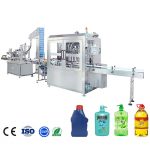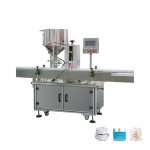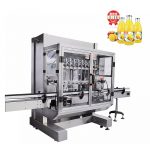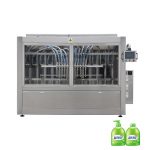Filling volume is the volume of a substance that is required to fill a container or space. It is a measure of the amount of space that a substance occupies and is commonly used in various industries, including chemical, pharmaceutical, and food processing.

There are several methods for determining the filling volume of a substance, and the choice of method depends on the nature of the substance, the shape and size of the container, and the accuracy required. Some common methods include:
- Physical measurement: This involves physically measuring the volume of the substance using a calibrated container or measuring device, such as a graduated cylinder or volumetric flask. This method is suitable for liquids and some solids with a known density.
- Displacement method: This involves immersing an object or container in a liquid and measuring the volume of the liquid displaced. This method is suitable for both solids and liquids and is often used to determine the volume of irregularly shaped objects.
- Archimedes' principle: This method involves determining the volume of an object by measuring the volume of a liquid displaced when the object is submerged in the liquid. This method is suitable for both solids and liquids and is often used to determine the volume of irregularly shaped objects.
- Gravimetric method: This method involves weighing the substance and determining the volume based on its density. This method is suitable for both solids and liquids and is often used to determine the volume of substances with a known density.
In addition to these methods, there are also various techniques and tools that can be used to determine the filling volume of a substance, such as computer simulations, imaging techniques, and specialized equipment.
The accuracy of the filling volume determination depends on the method and tools used, as well as the skill and experience of the person performing the measurement. It is important to carefully follow the appropriate guidelines and procedures to ensure accurate results.
The filling volume of a substance is an important factor in many industries and applications. For example, in the chemical and pharmaceutical industries, it is important to accurately measure the filling volume of substances to ensure that the correct amount of active ingredient is present in a product. In the food processing industry, the filling volume is important for ensuring that the correct amount of a product is packaged and sold.
Accurate filling volumes are also important in many other applications, such as in the construction industry for determining the volume of concrete or other materials needed for a project, and in the transportation industry for determining the capacity of tanks or containers.
In summary, filling volume is the volume of a substance required to fill a container or space and is determined using various methods depending on the nature of the substance and the accuracy required. It is an important factor in many industries and applications and is used to ensure that the correct amount of a substance is present or available.










